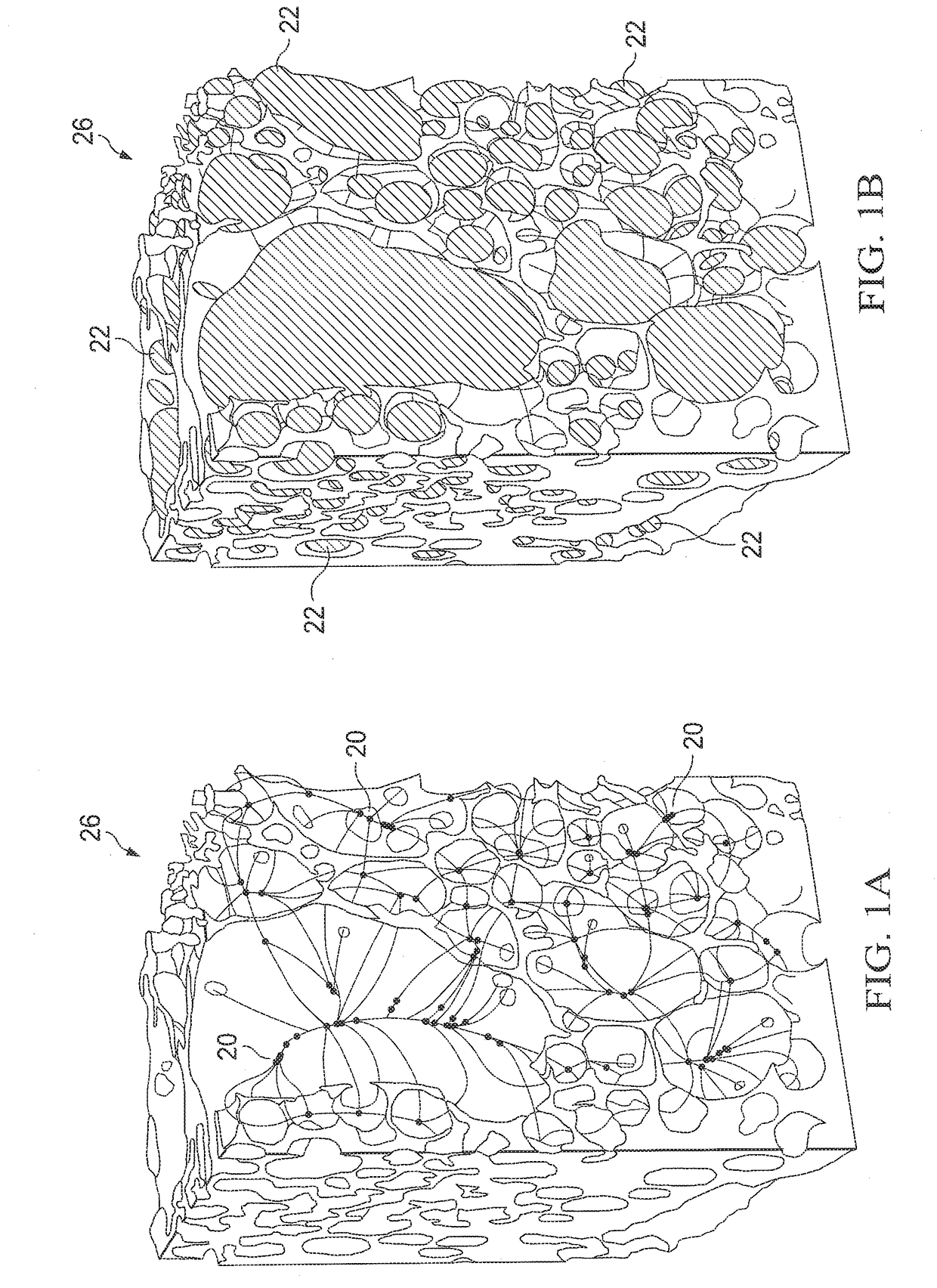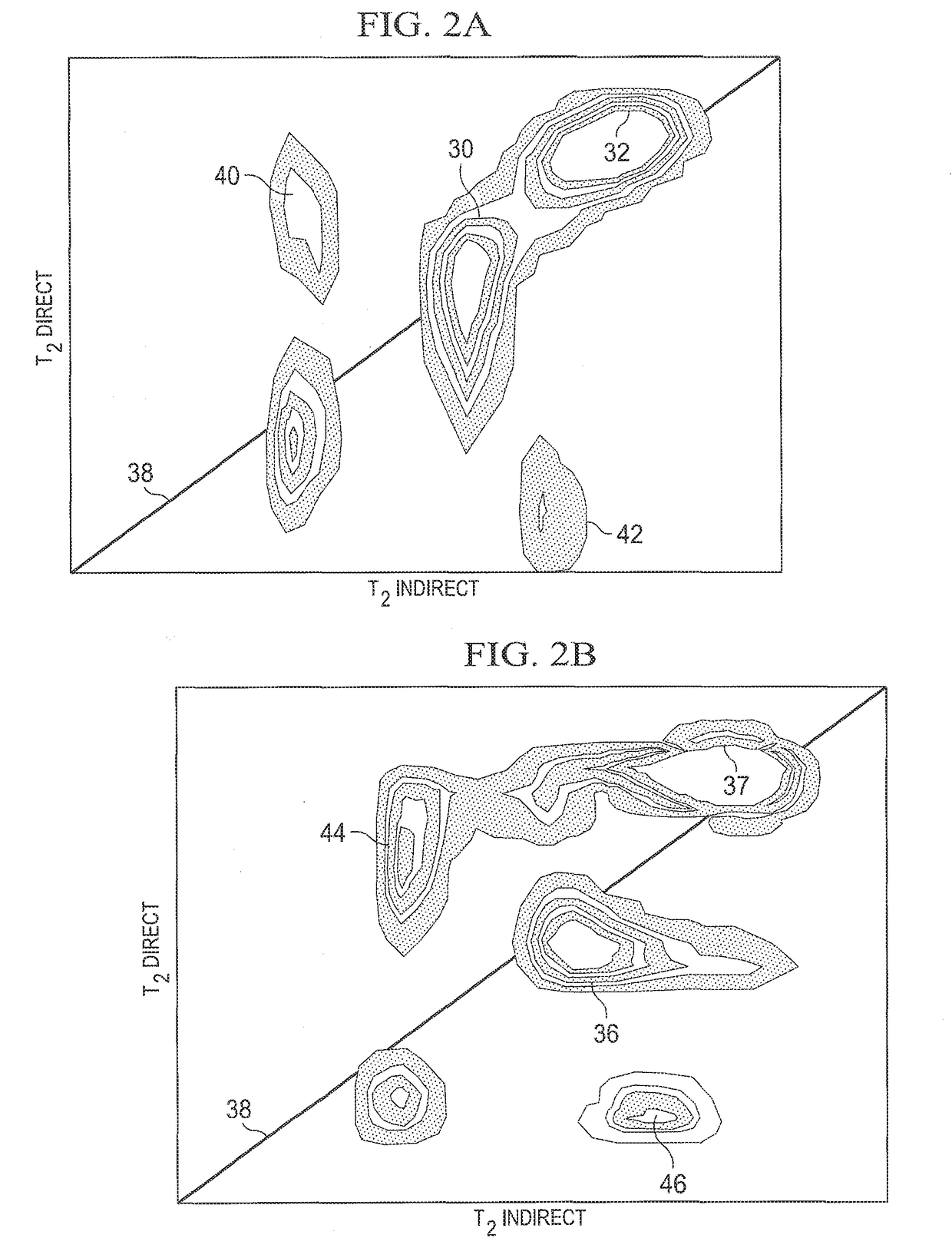Measuring connectivity between different pore types in porous media
a technology of porous media and connectivity, which is applied in the direction of magnetic measurement, nuclear magnetic resonance analysis, instruments, etc., can solve the problems of large margin of error, inability to accurately estimate reserve estimation from nmr logging and laboratory data, and inability to accurately measure pore connectivity from nmr logging data
- Summary
- Abstract
- Description
- Claims
- Application Information
AI Technical Summary
Benefits of technology
Problems solved by technology
Method used
Image
Examples
Embodiment Construction
[0020]In the drawings, FIGS. 1A, 1B, and 1C are displays of three-dimensional network models formed by prior art micro x-ray CT techniques. The models show at 20, 22, and 24, respectively, different fluid diffusion coupling within an example given pore structure 26 for the presence of different types of fluids. FIGS. 1A, 1B, and 1C thus illustrate an example rock sample 26 having pore distributions with different pore connectivity due to diffusion coupling. However, as mentioned, so far as is known micro x-ray CT methods require rock samples which are too small to be representative of a carbonate rock which has a relatively heterogeneous pore distribution. Thus, a rock sample for micro x-ray CT pore connectivity determination might not accurately represent formation carbonate rock of interest.
[0021]FIGS. 2A and 2B are example logarithmic exchange plots of NMR measurements at different relaxation or T2 times. FIGS. 2A and 2B are example two-dimensional T2-T2 maps of prior art NMR T2-...
PUM
 Login to View More
Login to View More Abstract
Description
Claims
Application Information
 Login to View More
Login to View More - R&D
- Intellectual Property
- Life Sciences
- Materials
- Tech Scout
- Unparalleled Data Quality
- Higher Quality Content
- 60% Fewer Hallucinations
Browse by: Latest US Patents, China's latest patents, Technical Efficacy Thesaurus, Application Domain, Technology Topic, Popular Technical Reports.
© 2025 PatSnap. All rights reserved.Legal|Privacy policy|Modern Slavery Act Transparency Statement|Sitemap|About US| Contact US: help@patsnap.com



